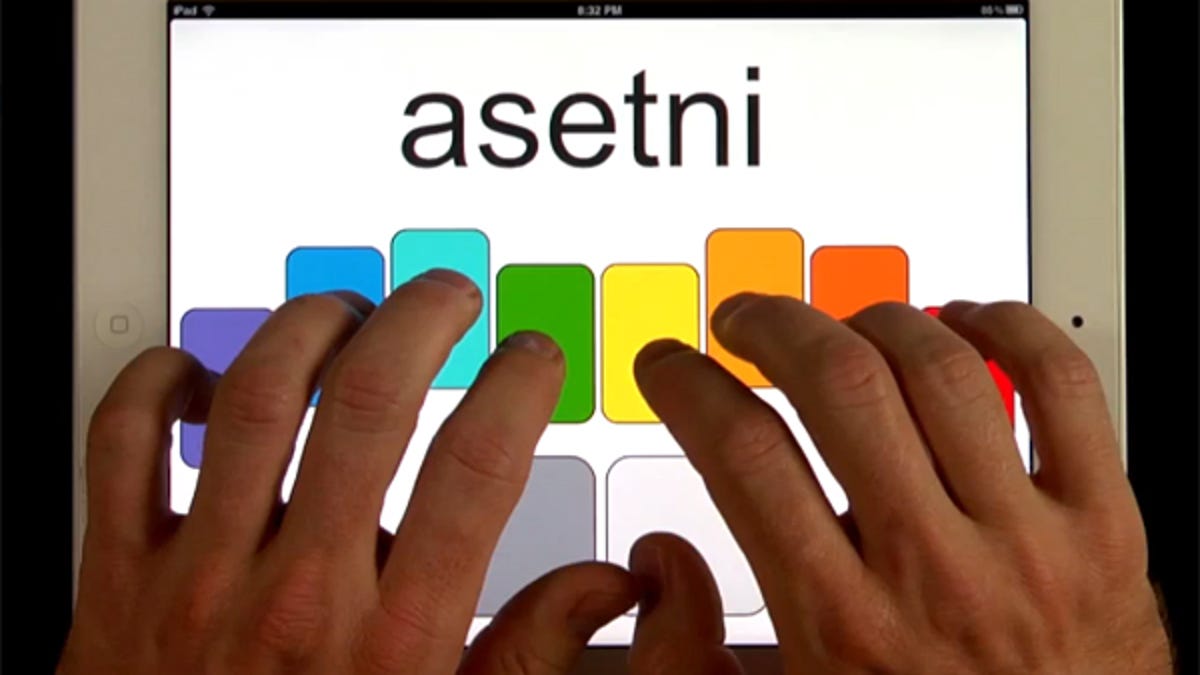10-button keyboard based on c-c-c-combos
A new keyboard system uses only 10 buttons that, using combinations, provides the user with a full set of keys.

(Credit: Pointesa)
A new keyboard system uses only 10 buttons that, using combinations, provides the user with a full set of keys.
The story behind the QWERTY keyboard is a strange one. Because of the way in which typewriters were designed, letters that are commonly written next to each other — such as "TH" and "QU" — needed to be separated in order to stop the machine from jamming up when the rods those letters were placed on would bang into each other.
It worked — but its design was based on technical expedience rather than human ergonomics.
Now that we no longer have those considerations thanks to modern technology — and tablet touchscreens — a better solution is plausible. But we've been using QWERTY keyboards for 134 years now; is another method likely to catch on?
Pointesa hopes so. The software developer has come up with an all-new typing system optimised for tablets that uses just 10 keys. It's called ASETNIOP, after the eight base letter keys (the other two are Shift and Space), and all other letters, numbers and punctuation marks can be typed by pressing two or more keys simultaneously.
Further to that, though, these 10 keys are laid out in the natural positions in which fingers land when you place them in a relaxed position on a flat surface. There are a few other features that piqued our interest: the ability to resize the keyboard for different hand sizes, and the ability to adjust its opacity, so it can be transparent — or even invisible. And there's even a helpful teaching mode to help you get the hang of it.
The basic question that drives the process for existing keyboards and keyboard replacement methods is "where is a finger being pressed down?" With ASETNIOP, this question is changed to "which finger is being pressed down?" In other words, the user only needs to concentrate on the action of pressing a specific finger down, and the actual location where the finger makes contact is no longer a determining factor.
Want to try it out? Open up this link on your iPad, and this link on your PC. You can get more information on the ASETNIOP website, and in the video below.
Via dvice.com

